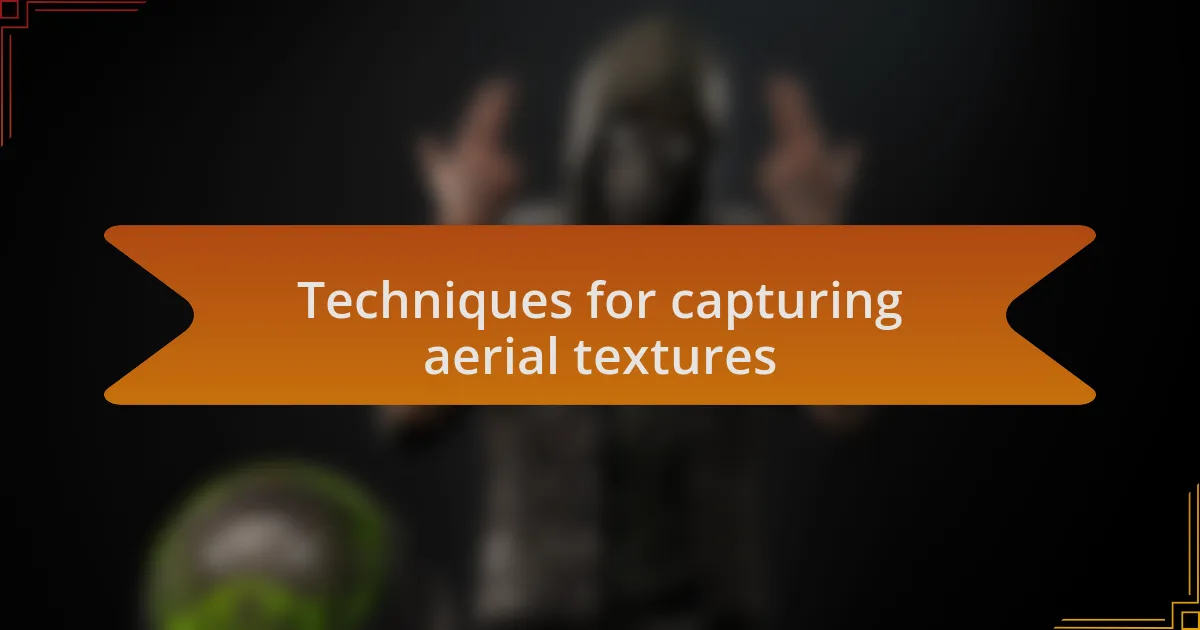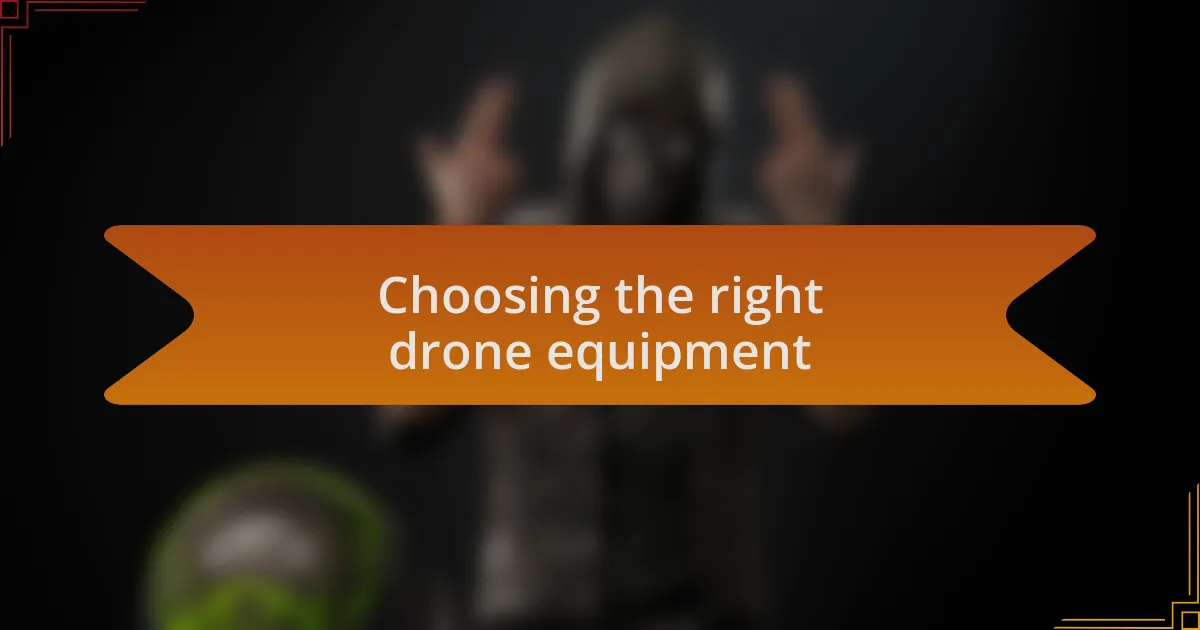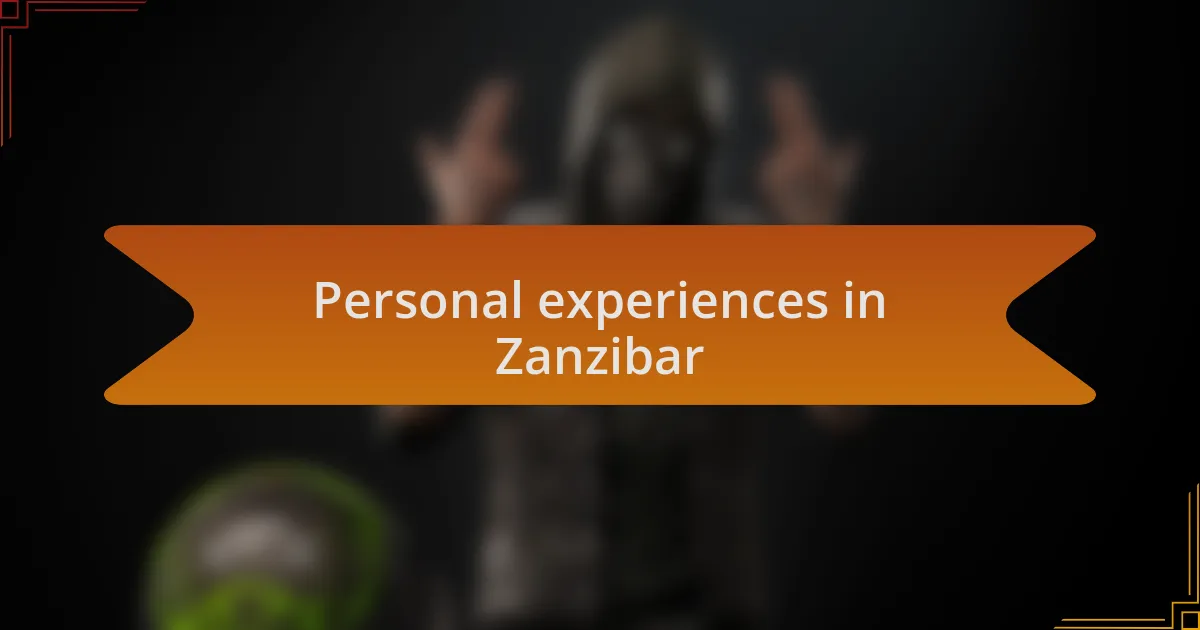Key takeaways:
- Drone mapping technology utilizes high-resolution cameras and sensors to gather precise geographic data, enhancing accuracy in surveying and planning.
- Zanzibar’s diverse landscape, characterized by vibrant colors and varied terrains, offers unique opportunities for capturing intricate textures through drone photography.
- Techniques such as adjusting flight patterns, altitude, and utilizing time-of-day lighting are crucial for revealing natural details in aerial imagery.
- Choosing the right equipment, including camera quality, battery life, and stability, is essential for effective drone photography and capturing the beauty of landscapes.

Understanding drone mapping technology
Drone mapping technology has revolutionized the way we capture and analyze geographical data. I remember the first time I saw a drone effortlessly glide over a landscape, capturing high-resolution images that transformed into a detailed map. It struck me then how such technology could unlock hidden patterns and textures in our environment that we might otherwise overlook.
At its core, drone mapping employs advanced sensors and cameras to gather imagery from the sky, which is then processed into geographic information system (GIS) data. This method allows for precise measurements and representations of terrain, making it essential for planning and development projects. Have you ever considered how much easier surveying remote areas has become? I’ve found that these applications are not only time-saving but also increase accuracy significantly, reducing human error that often comes from traditional surveying methods.
The beauty of this technology lies in its accessibility. With drones becoming more affordable and user-friendly, I’ve noticed a surge in enthusiasts and professionals alike diving into this field. It excites me to think about the stories these aerial textures can tell us, revealing insights into both natural and urban landscapes. What could be the next big discovery made from a bird’s eye view?

Overview of Zanzibar’s landscape
Zanzibar’s landscape is a stunning tapestry of vibrant colors and varied terrains. Picture this: the contrast of lush green forests against the turquoise waves of the Indian Ocean. During my last visit, I found myself captivated by the undulating hills and the almost surreal beauty of the spice plantations that stretch as far as the eye can see. Each corner of the island offers a new visual story, inviting exploration through the lens of drone mapping.
As I navigated through the coastal areas, the interplay of sunlight on sand and water was breathtaking. I remember hovering over the shoreline and being struck by how drone technology can reveal not just the beauty of the land, but also the intricate textures formed by the waves and the gentle ebb and flow of the tide. Can you imagine capturing those moments in such vivid detail? It transforms an already picturesque landscape into a piece of art, emphasizing the fluidity of nature.
Inland, Zanzibar doesn’t cease to impress. The dense forests and scattered villages create a unique patchwork that tells a tale of cultural heritage intertwined with natural beauty. When I surveyed the area above Nungwi, I realized how drone mapping captures the full essence of this island—its history, evolution, and rich biodiversity. What might we learn about our world just by looking at it from above?

Techniques for capturing aerial textures
To capture the unique textures of Zanzibar’s landscape, I often employ various drone flight patterns. For instance, a slow, circular flight around a focal point, like a spice plantation, allows the camera to record the subtle details of rows and patterns created by the cultivation process. I’ve noticed that this technique not only pulls the viewer into the scene but also invites them to appreciate the intricate craftsmanship of agriculture.
Another effective technique I’ve found is adjusting the altitude during a single flight. By gradually descending over a specific area, I can highlight the layered textures of the environment. I remember flying over a dense forest where I started at a higher altitude to capture the canopy’s vastness, then gently lowered the drone to focus on the bark’s rough patterns and the delicate undergrowth. Doesn’t it make a difference when you can reveal nature’s hidden details?
I also make use of time-of-day variations when capturing aerial textures. Golden hour is my favorite; the soft, diffused light enhances the colors and textures of the landscape. During an early morning shoot, I was mesmerized by how the light interacted with the ripples of the ocean, creating a shimmering effect that I just had to document from above. Have you ever seen how a simple change in light can redefine an entire scene? It’s a reminder that texture in aerial photography is not just about what you see but also about how you perceive it.

Choosing the right drone equipment
When it comes to selecting the right drone equipment, I always start with the camera quality, as this can make or break your shots. My go-to is a drone with a high-resolution camera—like 4K or higher—because those crisp details are essential for capturing the rich textures of Zanzibar’s landscape. Have you ever gazed at an image and felt like you could reach out and touch the surface? That’s the kind of impact quality gear can deliver.
Battery life is another crucial factor that I consider when choosing my drone. I once miscalculated and ran out of power while capturing the stunning coral reefs, which cut my session short. Now, I opt for drones that offer extended flight times, ensuring that I can explore vast areas without constant interruptions. Who wants to miss a perfect shot just because the battery gave out?
Lastly, I pay attention to the drone’s stability and ease of control. A stable platform is vital, especially when you’re trying to capture intricate aerial textures. There was a moment when I was shooting over the vibrant markets of Stone Town, and the gentle breeze tested my drone’s abilities. I felt so grateful for my stable setup, allowing me to maintain focus and capture those bustling scenes without worry. Isn’t it reassuring to know that the right equipment can give you the freedom to explore creatively?

Personal experiences in Zanzibar
While exploring Zanzibar, I had the chance to witness the breathtaking contrast of turquoise waters against white sandy beaches from the air. As I soared above Nungwi, I felt a surge of excitement watching the waves roll in. It’s moments like these that transform a simple flight into an unforgettable experience. Have you ever felt that sense of awe when you catch a beautiful view? I bet you can relate.
One of my most memorable days was spent flying over the spice plantations. The vibrant greens and earthy browns created a patchwork quilt of textures that I hadn’t fully appreciated until I saw it from the sky. Capturing those aerial shots filled me with a deep appreciation for Zanzibar’s rich agricultural heritage. Isn’t it fascinating how perspective can change your understanding of a place?
During a sunset flight, I encountered a moment that reminded me of my passion for aerial photography. The orange and pink hues painting the sky as the sun dipped below the horizon felt surreal. I remember feeling a mix of joy and serenity, knowing I was documenting something so ephemeral. Have you ever tried to capture a sunset? It’s a reminder that some moments are fleeting, and it’s our job to hold on to them through our lenses.